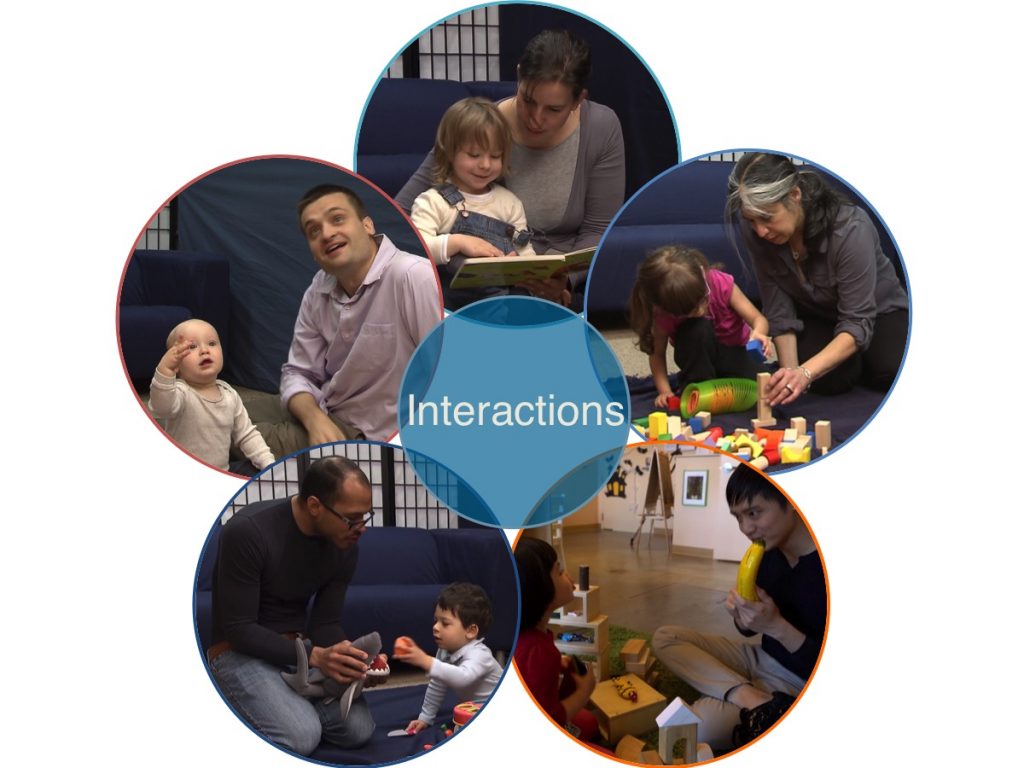
What features of face-to-face interactions help young children learn? To answer this, we must become keen observers of everyday interactions.
On the next page, there are five short clips of interactions between caregivers and children speaking in different languages. In each of these videos, you will see some features found in high quality interactions.
As you watch each video, write down what you observe. Are there aspects of the environment that might support children’s learning? Are there features that can be measured, like the number of times an adult points at something? What about features that can only be described, like the warmth in a parent’s voice?
Keep these interactions in mind. We’ll revisit these video clips later in the module.
-
- Back-and-forth or contingent interactions
- exchanges in which a caregiver times their responses to a child’s behavior
- Imitation
- observing then reproducing, or copying, a behavior
- Infant-directed speech
- a special tone and style of speech used to talk to young children. It’s also called parentese.
- Scaffolding
- the support a caregiver provides a child to help them achieve more than they would be able to accomplish on their own